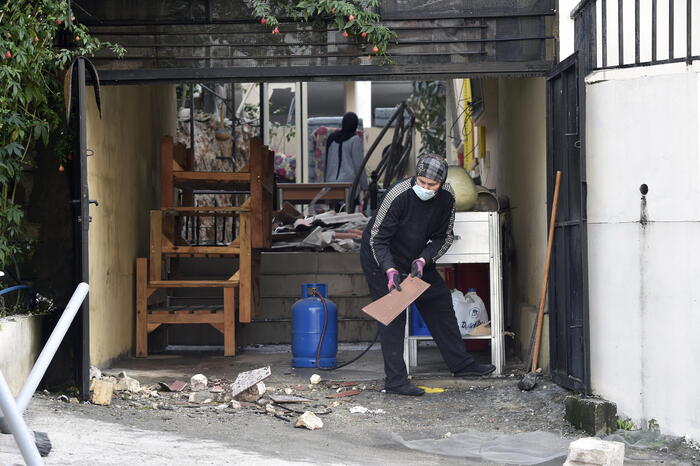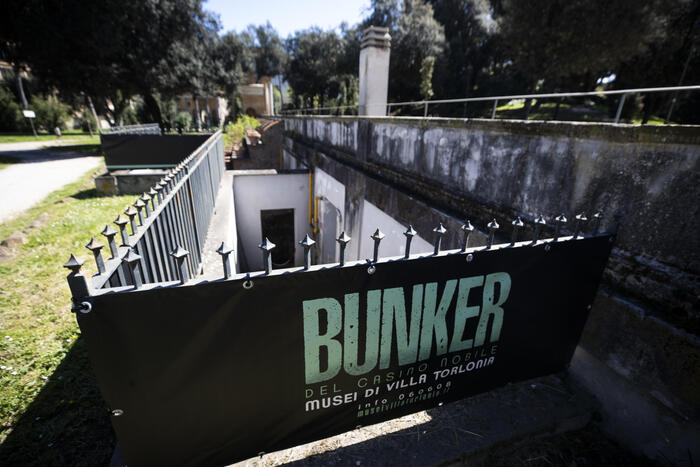Riddled with bullets, the building stands on the old "Green Line" separating the Christian and Muslim factions during the Lebanese civil war from 1975 to 1990. Renovated, it has been transformed into a museum and cultural space.
Until June 2023, the exhibition “Hello, Beirut?”
highlights the archives of a troubled past: publications from before the civil war devoted to the history of institutional corruption, strikes in the public sector but also student protest movements.
Film negatives and old newspaper clippings come together at the heart of the exhibition “Hello, Beirut?”
with other more contemporary and interactive images and artistic representations on the current crisis in Lebanon, a cultural event that intends to challenge the country's gangrenous history.
Read alsoLebanon distraught over the return of jihadists from Syria
These archives dialogue with images, video sequences and artistic installations illustrating similar scenes from the contemporary history of Lebanon.
The organizers of the exhibition wish to expose a decades-old tumor at the origin of the decomposition of Lebanon.
“Beirut is suffering, we are suffering”
, explains the director of the event, Delphine Abirached Darmency.
She says much of the current misery in the country has its roots in issues from a bygone era.
Beirut's bygone golden age
The idea for the exhibition came partly from the discovery of archives belonging to a Lebanese billionaire, Jean Prosper Gay-Para, who owned the famous Les Caves du Roy nightclub in Beirut, considered a symbol of the age of gold of the country before the civil war.
On a plate, we can read the words of the billionaire:
“Those sick minds, obsessed with money.”
A reference to the country's political elite.
It echoes a feeling still widely shared by a population bruised by an unprecedented economic crisis, for which the political class is held responsible.
"Jean Prosper Gay-Para evoked in the sixties what we live today"
, added Delphine Abirached Darmency.
More than three decades after the end of a bloody civil war, Lebanon is today in the grip of a serious financial crisis, its currency having lost more than 90% of its value and more than 80% of the inhabitants now living under the UN poverty line.
Its capital is still marked by the huge explosion at the port in 2020, due to ammonium nitrate stored without precautionary measures, killing more than 200 people and worsening an exodus similar to that caused by the civil war.
"The death of his people"
In addition to the archives, the exhibition “Hello, Beirut?”
hosts several installations by Lebanese artists invited to present works reflecting their vision of the Lebanese capital.
One of them, Rawane Nassif, presents a short documentary exploring the history of a neighborhood in Beirut where she grew up and returned this year for the first time in two decades to take care of her sick parents, but since deceased.
The film depicts
"loss"
, the 38-year-old anthropologist and filmmaker told AFP, because
"Beirut is in mourning, it mourns the death of its people and the death of all the opportunities it once had."
Raoul Mallat, a 28-year-old visual artist, also worked on the theme of mourning in a short film combining family archive footage from his childhood with recent snapshots of Beirut.
"This project, he says, helped me a lot to mourn certain aspects of my city that I would no longer find."
In the museum, holes in the walls, once used as lairs by snipers during the civil war, are now equipped with screens projecting images of an unprecedented protest movement that emerged in Lebanon in 2019 against the political class accused of corruption.
Nearby, a room is decorated with worn furniture and destroyed objects.
They were recovered from Les Caves du Roy, a now abandoned nightclub.
Rola Abou Darwich and Rana Abbout, the two artists, tried to reconstruct the place.
These symbolic ruins represent the tumultuous existence of Lebanon.
“Beirut is built on rubble
,” according to Rola, 38.
"It's part of where we live, how we live and who we are
," she said, believing that the situation is not going to get better.









